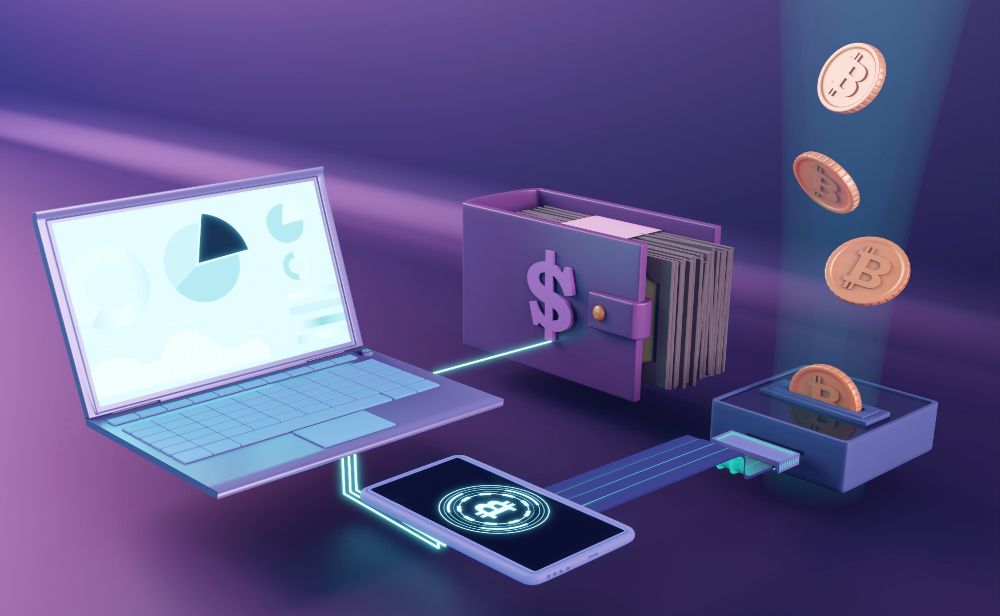The term “Smart Contract Wallets” refers to what exactly?

There are now two methods that users can employ to store and make use of their cryptocurrency holdings. Those who are new to cryptocurrency should begin by using a custodial wallet, as this is the most common and straightforward method. This typically involves putting one’s faith in a centralized company like as Coinbase or Binance. The Blockchain movement is working toward the creation of a peer-to-peer (P2P) financial system that individuals can access without the need for third party intermediaries such as banks or exchanges. However, a system that provides this convenience runs counter to the movement’s fundamental principle. On other words, holding cryptocurrency in an online exchange such as Coinbase is identical to holding assets in a traditional financial institution such as a bank.
The second choice is to utilize a wallet that does not save the user’s private information. Wallets that do not use a third party to store users’ money are called non-custodial wallets. These wallets are accounts that are created directly on the Blockchain. They are protected by something known as a “private key,” which is required in order to validate transactions and transfer funds to other accounts. A transaction can only be started by the individual who possesses the private key to the cryptocurrency being used. Because the wallet provider does not have access to the private key, it is the user’s responsibility to keep their keys in a secure location. This places a significant load on the user. If you lose them, it’s possible that the money is gone for good.
The Advantage of Using Smart Contract Wallets
Both of the solutions described above have significant drawbacks. Blockchain technology would only make sense if users could retain control of their cryptocurrency holdings and their money would be just as secure as it is with traditional financial institutions.
The decentralized smart contract wallets of Ethereum are the next step. Your assets will be stored in a smart contract that is hosted on the Ethereum Blockchain when you use these wallets. Because smart contracts are programmable, which can be imagined as adding a layer of code on top of the accounts, it enables new features that make them safer and easier to use than funds that are stored on a “normal” Ethereum account. For example, smart contracts can be used to automate certain tasks, such as transferring funds (also called Externally Owned Accounts).
To give just one example, it makes it possible to implement account recovery procedures. In the event that a user misplaces the phone on which the app containing the private key is stored, that person is still able to regain access to the smart contract that is holding the cash by completing a recovery procedure. After generating a new private key, the user’s money are included in the associated smart contract, which is then assigned to the new private key.
The recovery methods can take a variety of shapes and forms, but one frequent way is to ask the user to designate trusted relatives and friends when they initially install the app. This allows the app to verify the user’s identity before allowing them to access their data. This is referred to as “social recovery,” and the way it operates is as follows: when the user restores the app (for example, if they have misplaced their phone), the trusted contacts receive requests that they need to confirm. Following confirmation by the majority, the new private key will take over as the owner of the smart contract that is now holding the cash.
There are additional digital wallets that support multiple signatures, such as GnosisSafe. The recovery flow in this case operates a little bit differently, and the wallet is aimed more at DAOs and venture capital funds than at retail customers, but it essentially accomplishes the same thing by requiring the signatures of multiple users on a transaction and allowing the signers to switch places in the event that one of the signer’s wallets is lost or cannot be accessed.
What other kinds of transactions are feasible with smart contract wallets?
The good news is that there is virtually no limit to the ways in which one can innovate. Everything, in theory, is open to the possibility of being implemented.
Here are several examples:
• Transfer limitations: a user has the ability to establish the boundaries of how much money he or she wishes to spend on a daily, weekly, or monthly basis.
• Bundle transactions: Improve the user experience by condensing interactions with decentralized applications (dApps) that would normally require multiple steps when using a traditional wallet into one or two taps (e.g taking a Compound Loan in Argent)
• There are no transaction fees: In order to simplify the user experience and make advantage of so-called “Relayers,” the wallet provider may elect to forego the fees normally connected with Ethereum transactions (e.g Ethereum)
To put it another way, wallets that support smart contracts are where it’s at. They provide a solution to both issues that are inherent in cryptocurrency at the present time; consumers keep control of their assets while benefiting from enhanced security measures in comparison to what they obtain at their respective institutions. Regrettably, it is a lot more difficult to deploy them on Blockchains like Bitcoin because they do not have the capabilities of Ethereum’s smart contracts.





